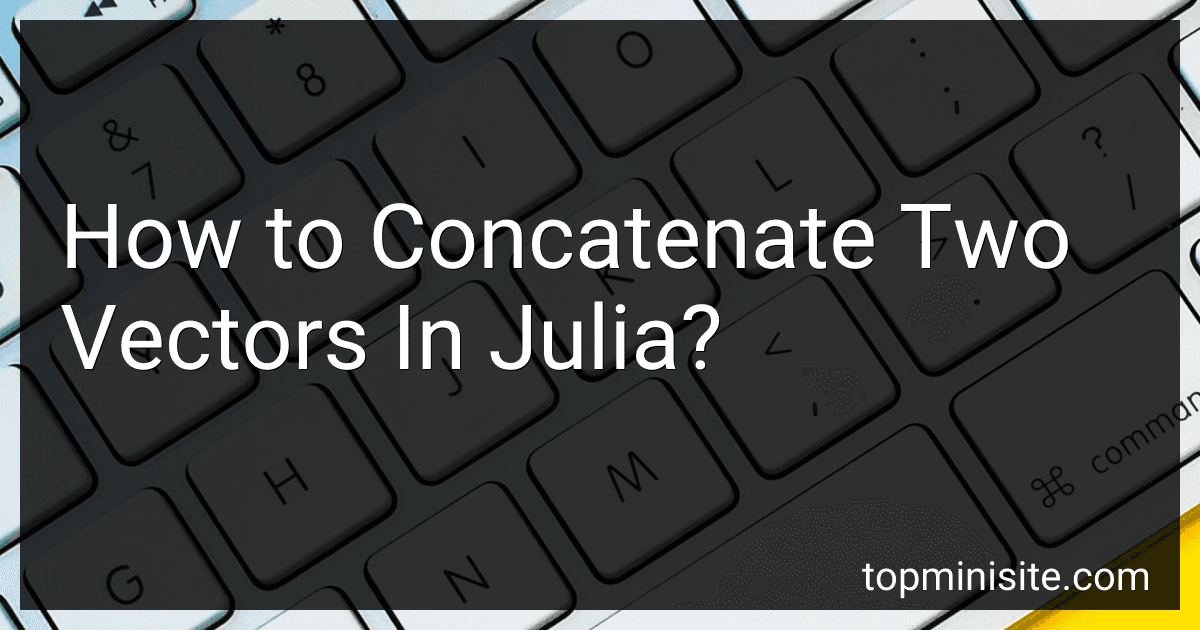Best Programming Guides to Buy in December 2025
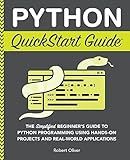
Python QuickStart Guide: The Simplified Beginner's Guide to Python Programming Using Hands-On Projects and Real-World Applications (Coding & Programming - QuickStart Guides)


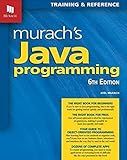
Murach's Java Programming Book Complete Guide for Beginners & Advanced Developers - Self-Paced Learning with GUI, Database & Object-Oriented Programming - Professional Coding Skills (6th Edition)


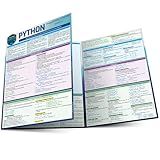
Python Programming Language: a QuickStudy Laminated Reference Guide



SQL QuickStart Guide: The Simplified Beginner's Guide to Managing, Analyzing, and Manipulating Data With SQL (Coding & Programming - QuickStart Guides)



Beginner's Step-by-Step Coding Course: Learn Computer Programming the Easy Way (DK Complete Courses)


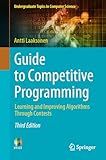
Guide to Competitive Programming: Learning and Improving Algorithms Through Contests (Undergraduate Topics in Computer Science)


To concatenate two vectors in Julia, you can use the vcat() function. This function takes in the vectors you want to concatenate as arguments and returns a new vector that contains the elements of both input vectors in the order in which they were provided. For example, to concatenate two vectors v1 and v2, you can use the syntax result = vcat(v1, v2). This will create a new vector result that contains all the elements of v1 followed by all the elements of v2.
How to concatenate strings in Julia?
In Julia, you can concatenate strings using the * operator or the string() function.
Using the * operator:
str1 = "Hello" str2 = "World" result = str1 * ", " * str2 println(result) # Output: Hello, World
Using the string() function:
str1 = "Hello" str2 = "World" result = string(str1, ", ", str2) println(result) # Output: Hello, World
What is the length of the concatenated vector in Julia?
In Julia, you can find the length of a concatenated vector by using the length() function. This function returns the total number of elements in the concatenated vector.
For example, if you have two vectors A and B, and you concatenate them using the vcat() function like this:
C = vcat(A, B)
You can find the length of the concatenated vector C by using the length() function like this:
len_C = length(C)
This will give you the total length of the concatenated vector C.
What is the function for flattening a matrix into a vector in Julia?
In Julia, you can use the vec() function to flatten a matrix into a vector. Here's an example:
A = [1 2; 3 4; 5 6] v = vec(A) println(v)
This will output:
[1, 3, 5, 2, 4, 6]
What is the output of flattening a matrix into a vector in Julia?
When a matrix is flattened into a vector in Julia, the output is a 1-dimensional array containing all the elements of the matrix in a single row. For example, if we have a 2x3 matrix:
[1 2 3; 4 5 6]
The flattened vector would be:
[1, 2, 3, 4, 5, 6]
How to concatenate vectors in Julia?
In Julia, you can concatenate vectors using the vcat() function. Here's how you can do it:
# Create two vectors vec1 = [1, 2, 3] vec2 = [4, 5, 6]
Concatenate the vectors
result = vcat(vec1, vec2)
Print the result
println(result)
This will output: [1, 2, 3, 4, 5, 6]
How to append elements to a vector in Julia?
You can append elements to a vector in Julia using the push! function. Here's an example:
# create a vector vec = [1, 2, 3]
append a new element to the vector
push!(vec, 4)
display the updated vector
println(vec)
This will output:
[1, 2, 3, 4]
In this example, the push! function is used to add the element 4 to the end of the vector vec.
